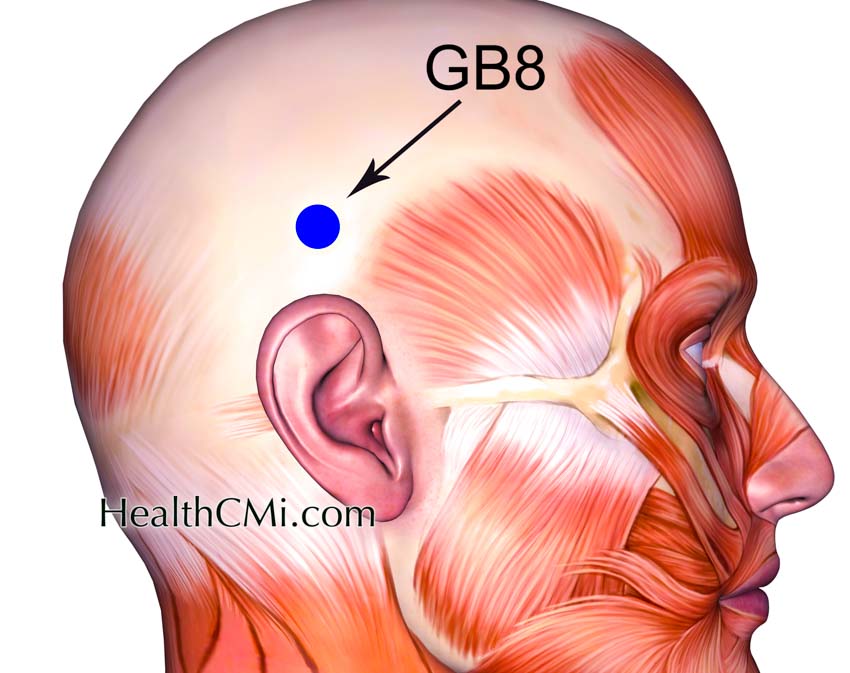
Acupuncture improves ischemic stroke patient outcomes. Investigators from Guangzhou University of Traditional Chinese Medicine and its affiliated hospital conducted a clinical trial comparing regular scalp acupuncture with warm scalp acupuncture. The results show that the warm scalp acupuncture group produced superior patient outcomes. [1]
In this investigation, the patient TCM symptom scores, mean blood flow velocity of
basilar artery, and National Institutes of Health Stroke Scale (NIHSS) scores were recorded and evaluated. All measuring parameters improved in both groups, with more marked improvements in the warm scalp acupuncture group. In this group, TCM symptom scores dropped from 45.10 ±10.41 to 19.43 ±10.33, a more significant improvement compared with the control group (44.37 ±13.03 to 25.07 ±11.22).
Mean blood flow velocity of basilar artery scores improved more significantly in the warm scalp acupuncture treatment group. NIHSS scores showed similar patterns of change. The score improved more significantly (9.30 ±1.92 to 5.11 ±1.79) in the warm scalp acupuncture group. The improvement was smaller (9.23 ±2.02 to 6.13 ±1.81) in the control group.
The study had a total of 60 patients that were randomly divided into a regular scalp acupuncture control group and a warm scalp acupuncture group, with 30 patients in each group. The statistical breakdown for each randomized group was as follows. The acupuncture control group consisted of 13 males and 17 females. Age range was 31 to 91 years. The average age in this group was 61.00 ±9.50 years. The course of disease ranged from 30 to 245 days. The average course of disease was 135 ±9 days.
The warm scalp acupuncture consisted of 15 males and 15 females. Age range was 29 to 92 years. The average age in the control group was 60.00 ±9.49 years. The course of disease ranged from 31 to 249 days.The average course of disease in the treatment group was 140 ±8 days.
For inclusion criteria, all patients suffered acute onset and numbness or weakness on one side of the face or limb, indicating neurological changes. CT and MRI showed ischemic stroke. Imaging demonstrated lesions or symptoms lasting over 24 hours. Patients with nonvascular problems and cerebral hemorrhage were excluded. Total intracranial artery blockage patients and severe neurological disorder patients triggered by cerebral infarction were excluded from the investigation.
The study used the following design. For patients in both groups, the same three points were used:
- GV17 (Naohu)
- GV20 (Baihui)
- GB8 (Shuaigu)
For the regular scalp acupuncture control group, a supine position was taken. Filiform needles (0.32 mm × 40 mm) were inserted transversely with a needling length of 0.5 to 0.8 cun. This treatment was administered daily for 5 consecutive days, followed by a 2-day break. The course of treatment was 8 weeks.
For the warm scalp acupuncture group, the same position and acupoints were used, but a special technique was employed via a warm scalp acupuncture safety shield device. The device is in the shape of a cap, consisting of vertical and horizontal PVC wires with connectors at the joints. Moxa is placed close to the scalp in between the spaces using spiral-shaped holders. After placing the device on patients’ head and stabilizing it, needles of 1.5 cun in length were angled using a hemostat at a distance of 15 mm from the tip to form a 90-degree angle. GV17 (Naohu) point is at the center of the top square at this time.
The angled needles are then transversely inserted at Naohu so that the exposed parts of the needles were made vertical to the Naohu acupoint. Moxa (1 cm in diameter, 1.5 cm length) were connected at the needle ends and stabilized using the spiral holder. Two moxa pieces were used for a duration of 30 minutes.
The device provides a safe method for applying moxa heat at the scalp region. The course of treatment was 8 weeks. The results show that conducting warm scalp acupuncture using a specialized device is a safe and effective method for improving patient outcomes after an ischemic stroke.
Reference:
[1] Huang Cihui, Lin Yunxin, Zhuang Zeqin, Shen Danting, Jiang Huaqing, Zheng Liang, Clinical Observation of Therapeutic Efficacy of Moxibustion with Warming
Needle at Scalp Points for Treatment of Ischemic Stroke, Journal of Guangzhou University of Traditional Chinese Medicine, August 2021, Vol. 38, No. 8.


